- Home
- Keith Douglass
Bloodstorm sts-13 Page 3
Bloodstorm sts-13 Read online
Page 3
Three days after the Benghazi Messenger left Odessa, it docked in Tripoli. The port authorities knew it was coming. They had reported the time of arrival to the twelve-man Revolutionary Command Council and Colonel Muammar al-Qaddafi, the council head as well as Prime Minister, Minister of Defense, and Commander in Chief of the Libyan Armed Forces.
A huge celebration had been planned and exploded the moment the sleek, twenty-two-knot freighter touched the dock with its light cargo strapped down on the deck.
What few Western journalists there were in the capital had no idea what the celebration was about. There was no television or radio announcement about the landing. Nor when Qaddafi made a short speech at the site did he explain what was so important on board the ship.
Qaddafi had spoken from a low platform surrounded by two hundred of his elite personal guard. When he finished, he marched away in the center of this guard to his armored limousine, and it rolled away in a six-car caravan. The vehicles began changing places until it was confusing which one the Libyan leader rode in.
Two hours later, Qaddafi paced back and forth in a well-guarded warehouse near the waterfront. He watched his best engineers dismantling the nose cone of the Russian Sasin ICBM.
“Can’t they go faster?” Qaddafi asked.
The man generally considered to be the number-two man in Libya had been pacing with his commander. They both stopped. The second man was Abdul Fantoli.
“Now is an excellent time to exercise some patience, Mr. Prime Minister. That way we don’t rush the engineers so they make a mistake and ten nuclear weapons go off all at once, reducing our beloved Tripoli to an ash being washed over by the boiling Mediterranean.”
Qaddafi stared at Fantoli for a moment and shrugged. “Just so the ten little packages are all safely inside and we can get them out and use them. For fourteen years I have been waiting for this day. So well I remember our blistering defeat in Chad back in eighty-seven when we had to pull out and leave a billion dollars worth of military equipment behind. That will never happen to us again. Never again.
“This time we will sweep in with power and speed that will make the Nazi Blitzkrieg look like a schoolboy game. This time we will overwhelm them and make them pay.”
Fantoli nodded. “Yes, we are ready. Our special strike forces can be ready in three days, then move out to the assembly areas in the desert. One thing we need to finalize is the delivery method.”
“Finalize it today, Fantoli. Test it tomorrow, alert the strike force the next day. Three days from then we strike.”
Fantoli acknowledged the order and hurried away. In his own limousine, he phoned his top engineer. They met in his office, both arriving at about the same time in the bomb-proof structure four stories below ground.
The engineer listened to the timetable.
“I suggest that we use a MiG-23 Flogger jet to deliver the bomb,” he said, “It will be recalibrated to detonate at ten thousand feet in an airburst. Our engineers know how to do this. Releasing the bomb from the hard point on the Flogger’s wing will arm the bomb. It will be delivered over the target and descend from thirty thousand feet on a parachute to the ten-thousand-foot level, where it detonates.
“This will give our pilot plenty of time to get out of the way of the bomb blast itself or any effects of the radiation. He will circle thirty miles out, then return for a flyover for a report on the effect of the bomb. Pictures will be taken as well. When the nuclear engineers finish their work and give us the bomb ready to drop, we will be ready.”
Fantoli drew diagrams on a pad of paper on his desk.
“You’re sure that this will work?”
“The targetable nuclear warhead is relatively simple. We take off the guidance system and the small rockets, readjust the arming mechanism, and set them to detonate at ten-thousand feet of air pressure. Nothing can go wrong.”
“I agree. That’s why the Prime Minister and I and half of our staff will be in Benghazi for the next three days directing the attack from there. Good luck, and we’ll see you when we get back.” Fantoli chuckled. “That is, if nothing goes wrong, we’ll see you when we get back.”
Fantoli checked the target. It was just over the border into Chad a hundred miles, a small town called Yebbi Bou. None of the staff or the field commanders knew if they would actually drop the nuclear bomb or only threaten to. They would find out in three days. He had no current population figure for the town, but the estimate was about fifteen to twenty thousand people. It would be a wake-up call for Chad.
He made three phone calls alerting those who needed to know. Their troops would begin moving tomorrow, and would be in hidden camps along the border at the right time.
Fantoli knew it would happen. The engineers had researched this project for three months, had come up with their changes on the warheads and the propulsion systems and the arming device. They would have the bomb ready on time. The parachute had been tested a dozen times on a mock-up of the same weight. It had worked perfectly every time from thirty thousand feet.
He made one more phone call. Then was on his way to pick up the Prime Minister for their quick flight to Benghazi. It would be an interesting three days.
NAVSPECWARGRUP-ONE
Coronado, California
Commander Dean Masciareli slammed the flat of his palm down on his pristine-clean desk.
“Listen up, SEALs. There are going to be some changes around here. No more of this cowboy shit. You will go through channels of command. You will not bypass me or Admiral Kenner on any matter whatsoever. Is that distinctly clear?”
Lieutenant Commander Blake Murdock, his 2IC Lieutenant (J.G.) Ed DeWitt, and Master Chief Petty Officer Gordon MacKenzie all nodded.
“Gentlemen, I want to hear you say it,” Masciareli barked.
“Yes, sir, clear, understood,” all three said, and Masciareli snorted and sat down behind the large desk.
“All right. Any time this Don Stroh character contacts you, he should be bumped up the chain to me and I’ll tell the admiral. Then if there is an assignment, it will come down the chain from the Chief of Naval Operations to the admiral, not from some chicken-sucking CIA man.”
Master Chief MacKenzie was the most relaxed man in the room. He had seen commanders come and go through this office. He cleared his throat, and Masciareli looked at him.
“Master Chief?” Masciareli asked.
“Sir. Let’s say I get a phone call or a signal from the office of the Chief of Naval Operations. I am to buck that up to you?”
“Precisely, Master Chief. The admiral and I are tired of being bypassed and not even knowing where our Seventh Team Third Platoon is half the time. We have to be in the picture. Admiral Kenner just talked with the CNO this morning and ironed things out. The CNO will not be calling you, Master Chief, or you, Commander. This CIA man, Stroh, may be a problem. If he calls, tell him simply that he must get into the loop and go to the CNO, who will then contact Admiral Kenner and we’ll get the word down to the concerned platoon. Is that all perfectly clear?”
Again the chorus of agreement came from the three SEALs.
“Good. Now sit down. We’ve had a tentative alert for sometime next week. It seems that the CIA has been monitoring a cache of former Russian ICBMs in the Ukraine. They all were supposed to have been returned to Russia years ago for their agreed-on destruction. Most were. Some were not. Now the CIA tells us that some of those missiles have been moved from the underground armory near Odessa, in what is now the independent nation of Ukraine, and put on board a Chinese freighter.
“The satellites have lost the freighter, but the CIA believes it to be somewhere in the Aegean Sea. It’s moving at only ten knots and the freighter is said to be an old rust bucket. The CIA thinks it’s on its way to China.
“Those ICBMs are the type that have ten independently targetable nuclear warheads in each nose cone. If the Chinese get three of them, that’s thirty more nuclear bombs they can add to their arsenal. If they get ten missiles,
it’s a hundred more nukes for them.
“There is a chance that your platoon may be asked to intercept that freighter and take it over to destroy the warheads, or simply sail the ship into a neutral port where U.S. forces could take control of the nose cones of those missiles. Comments.”
“Why would the Chinese use an old rust bucket to haul out such a valuable cargo?” DeWitt asked.
“We don’t have an answer.”
“How fast is the ship traveling?” Murdock asked.
“That we do know,” Masciareli said. “Ten knots. Which seems strange when most freighters can make from eighteen to twenty-three knots. Comments why?”
“A ploy to throw us off the scent,” Ed DeWitt said. “Nobody would put all those missiles in an old scow that could make only ten knots. They hope to slip through the net.”
“Why didn’t they fly them?” Murdock asked. “Be a lot simpler and faster.”
“Probably too hard to get a Chinese transport plane large enough to take the type missile we’re talking about,” Masciareli said. “Then getting clearances in and out of an airport in Odessa would be much harder than slipping away from a dock at midnight.”
“So we could have a wet takedown on the scow if we can find her,” Murdock said.
“About the size of it,” Masciareli agreed. “The admiral will keep us up to date on matters. He said Don Stroh will still be a field rep for the CIA, but official action will go through the admiral.”
“Yes, sir,” Murdock said.
“That’s it. I would guess you might have some wet training to do about now.”
“Yes, sir,” DeWitt said.
The three stood.
“You’re dismissed,” Masciareli said. The SEALs walked out the door and left the building.
“Good-bye, Don Stroh,” DeWitt said.
“Not a chance,” Master Chief MacKenzie said. “Oh, he’ll pull back, send requests through, but there will be a time when it just won’t work through channels and he’ll jump the CNO to call me direct and get things moving. Won’t be long. Kenner and Masciareli had their big shot, moved things to Navy time, so they’ll be happy for a while. First thing you know they won’t want to take the time to keep tabs on us, and we’ll be back to business as usual.”
“Hope to hell you’re right,” Murdock said. “Stroh has been a pain sometimes, but he gets the job done. Now, for some training. Take down a freighter at sea. Ideas, 2IC?”
“Yeah, a couple.”
They stopped at the Quarterdeck, where Murdock put in a request with the master chief for the use of a destroyer for two days for sea training. The request went to Masciareli, who asked for Murdock on the phone.
“A destroyer for two days? You know what that’s going to cost the Navy?”
“A few hundred gallons of diesel fuel and some tired sailors. We need the actual at-sea training going up the side of a ship. Hone our skills on daylight practice, then chasing down the ship at night and doing the same thing. Think what it will cost if we can’t do the job and that freighter gets through to China.”
An hour later they had the authorization through Admiral Kenner. By 0935 Murdock was on the phone with Commander Zertiz, CO of the Donald Cook, DDG 75, ported at the 32nd Naval Pier for some minor repairs.
“You want to do what?” Zertiz asked.
Murdock explained it to him.
“Whatever the admiral says,” Zertiz replied. “My crew is on board. We were due to sail in the morning on a training run. We’ll just jump it a few hours. We’ll see you five miles off Point Loma sometime after fifteen hundred.”
“Right, Commander. Once on station, set a two-mile-box course at ten knots. That’s the speed we need.”
Third Platoon of SEAL Team Seven had been scheduled for a five-mile run and a five-mile ocean swim that afternoon. Ed DeWitt made the needed arrangements. They took a bus to nearby North Island Naval Air Station, with a flatbed truck right behind them holding two fully inflated IBSs. The Sea Knight chopper sat on the flight line warmed up and ready to move. The Sea Knight is a workhorse medium assault helicopter with two contrarotating, three-blade main rotors fore and aft on the fuselage. It can haul twenty-five fully combat-ready troops or fifteen litters on a hospital run. It is armed with two .50-caliber machine guns, and can use door gunners with freewheeling machine guns. It has a maximum speed of 165 mph, with a maximum range of 420 miles.
The sixteen SEALs, wearing cammies over their wet suits, loaded on board the helicopter and pushed the two IBSs and their special equipment inside through the aft hatch. All the men wore their usual combat vests and carried their assigned or selected weapons with full loads of ammunition.
The chopper’s pilot checked with Senior Chief Dobler, who gave him a thumbs-up, and the bird lifted off just after 1435.
“How many of you have done this before?” Dobler asked. He had a response of twelve hands out of the sixteen. “Nothing to it. Just follow orders, work slowly and carefully, and it will go off like clockwork. Any questions?”
“We’re going to run down a destroyer in our IBS?” Tony Ostercamp, Machinist’s Mate First Class, asked.
“The destroyer will be making only ten knots. That’s the speed this rusted-out freighter is supposedly doing. We’ll drop in ahead of the ship, power over to her and match speed, then latch onto the side of the destroyer with our magnets. We’ve been over the procedure a dozen times.”
“Jump time in three minutes,” the speaker in the chopper said. The men stood and began checking each other’s gear, then lined up with one squad on each side of the big bird waiting for the aft swing-down hatch to open.
A minute later it yawned downward. When the red jump light came on, the first two SEALs pushed the two IBSs out the rear, picked up their flotation drag bags, and looked at Dobler.
“Go, go, go,” Dobler shouted to be heard over the sound of the chopper. The SEALs ran to the back of the CH-46 and stepped into space. The craft was only ten feet off the water. They hit almost at once, went underwater, came up grabbing at their flotation bags, and swam toward the floating IBSs.
Once all the SEALs were on board the two rubber boats, the engines were started and the small craft began nosing to the left to meet the path of the destroyer about a mile behind them. They plowed through a medium sea at the assigned ten knots.
Murdock watched his men. Jaybird would be the first one up the side of the destroyer. Out of the other boat it would be Fernandez, Gunner’s Mate First Class, who had done it before. Murdock judged the angle of the destroyer and motioned for the two boats to move ahead another hundred yards. Then they waited. The men on the destroyer were supposed to ignore them.
As it came up, Murdock thought that the five-hundred-foot-long destroyer had never looked larger. He watched as it sliced through the water fifty yards to the left. Kenneth Ching, Quartermaster’s Mate First Class, who was on the motor, revved it at just the right time and moved the rubber boat ahead at nearly full speed as it ate up the distance to the big ship and came alongside amidships. Holt and Bradford slammed the strong magnets against the side of the destroyer and tied them off to the side of the IBS. They were latched on. Behind them he saw the Bravo Squad boat miss the tie and surge away from the destroyer. It powered back to the side of the craft, landed the strong magnets, and tied the IBS to the mother ship.
At once Jaybird and Fernandez began to work their way up the sloping sides of the destroyer. They had strong hand magnets and smaller ones on their boots. They lifted the hand magnets off the side of the ship, extended their arms as far upward as they would go, and let the magnets clamp tight as they took a step upward. Each man trailed a strong woven nylon line behind him.
The side of the destroyer was maybe a quarter of the distance from water to rail that a freighter would be. The two SEALs worked upward quickly, and were soon over the rail.
On the deck of the destroyer, Jaybird ignored six curious seamen, and tied off the nylon line to the strongest rail support and ga
ve it two quick tugs. Below, Joe Lampedusa, Operations Specialist Third Class, grabbed the rope and began to climb upward, walking up the ship as he heaved his body upward hand over hand on the strong line.
Murdock was the last man up from his boat. He left Vinnie Van Dyke, Electrician’s Mate Second Class, to stay with the boat. On the actual operation all eight men would go topside.
On the destroyer’s deck, Murdock gathered his men around.
“That’s how we’ll get on board. It will be a lot tougher climb than that. We’ll go back to base tomorrow and work on the rope climbs. Now everyone over the side on the rope in reverse order from the way you came up.”
They all went down the rope. In a real operation they would leave the nylon line attached. On this training exercise one of the destroyer crewmen was asked to untie it once the last man was down.
They unlatched from the destroyer, surged away from it, and went to the other side, where they worked the climb again. By that time it was turning dusk. They stayed on board this time, had chow with the crew, and got ready for their night exercise. It would be much the same, only without any lights. The destroyer would be in combat mode showing few lights.
Captain Zertiz came down on deck and watched the SEALs go over the side. He found Murdock.
“You guys always have this much fun?” he asked.
Murdock grinned and shook the commander’s hand. “Usually it’s best when nobody is shooting at us. Thanks for your help. We needed some polishing.”
“You do this at night?”
“Right. Easier to hide in the dark so we don’t get shot. We’ll do the climb twice in the dark, then we’ll ask you to call in our Sea Knight for a night pickup. We’ll leave the IBSs with you and retrieve them when you get back into the bay.”
The night climb proved to be little different from the daylight one. They did have more trouble estimating the speed of the destroyer and finding the right path to motor alongside it. Then it was routine.
Topside after the second climb, Murdock asked one of the chiefs standing around watching to have the captain radio to North Island Naval Air Station that it was time to send the chopper out for a nighttime pickup with the ladder.

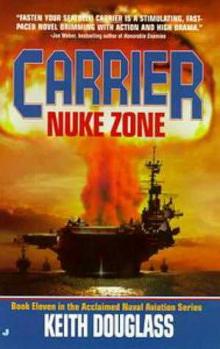 Nuke Zone c-11
Nuke Zone c-11 Seal Team Seven 6 - Battleground
Seal Team Seven 6 - Battleground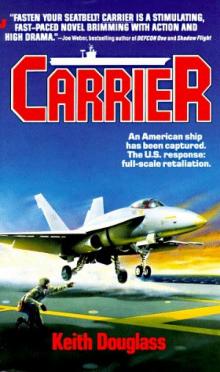 Carrier c-1
Carrier c-1 Island Warriors c-18
Island Warriors c-18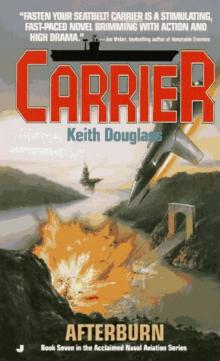 Afterburn c-7
Afterburn c-7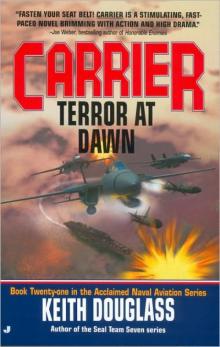 Terror At Dawn c-21
Terror At Dawn c-21 Specter sts-2
Specter sts-2 Joint Operations c-16
Joint Operations c-16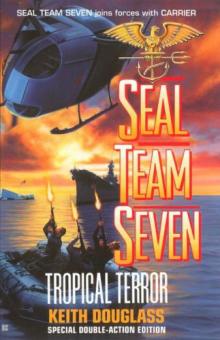 Tropical Terror sts-12
Tropical Terror sts-12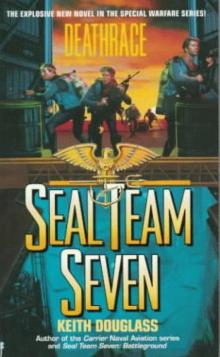 Seal Team Seven 7 - Deathrace
Seal Team Seven 7 - Deathrace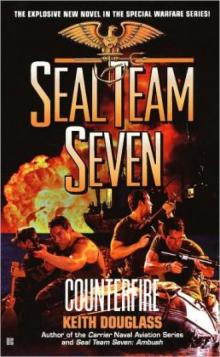 Counterfire sts-16
Counterfire sts-16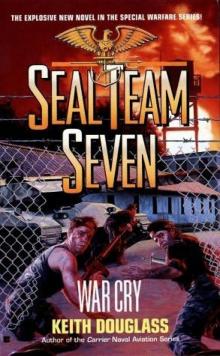 War Cry sts-9
War Cry sts-9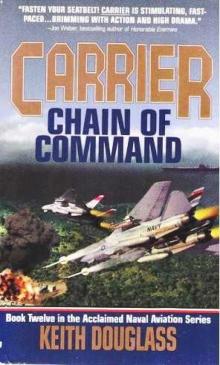 Chain of Command c-12
Chain of Command c-12 Brink of War c-13
Brink of War c-13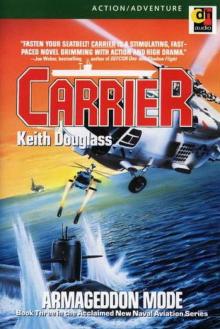 Armageddon Mode c-3
Armageddon Mode c-3 Arsenal c-10
Arsenal c-10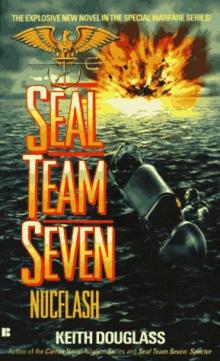 Nucflash sts-3
Nucflash sts-3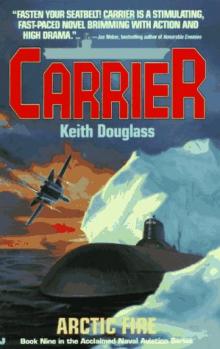 Arctic Fire c-9
Arctic Fire c-9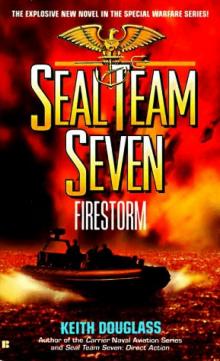 Firestorm sts-5
Firestorm sts-5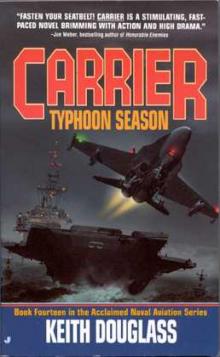 Typhoon Season c-14
Typhoon Season c-14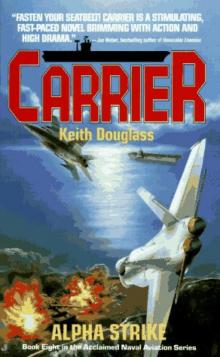 Alpha Strike c-8
Alpha Strike c-8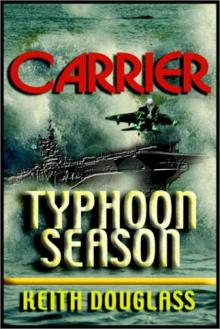 Carrier 14 - TYPHOON SEASON
Carrier 14 - TYPHOON SEASON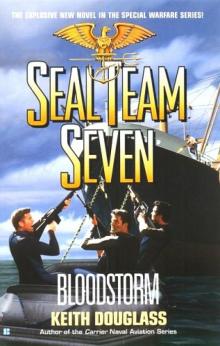 Bloodstorm sts-13
Bloodstorm sts-13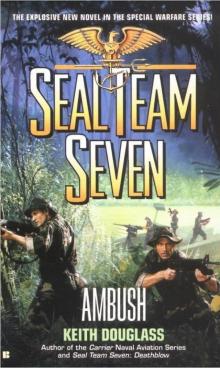 Ambush sts-15
Ambush sts-15 First Strike c-19
First Strike c-19 Flame Out c-4
Flame Out c-4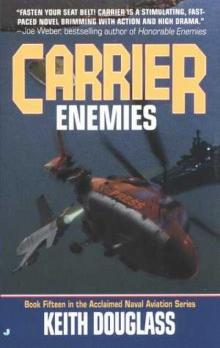 Enemies c-15
Enemies c-15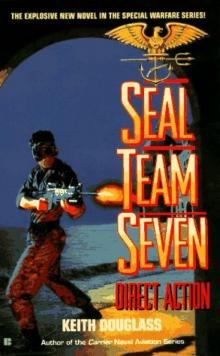 Seal Team Seven 04 - Direct Action
Seal Team Seven 04 - Direct Action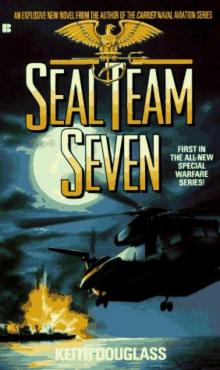 Seal Team Seven 01 - Seal Team Seven
Seal Team Seven 01 - Seal Team Seven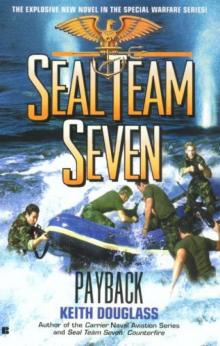 Payback sts-17
Payback sts-17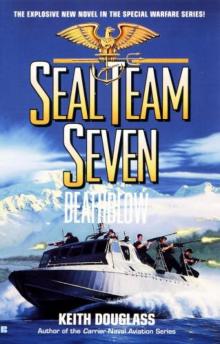 Death Blow sts-14
Death Blow sts-14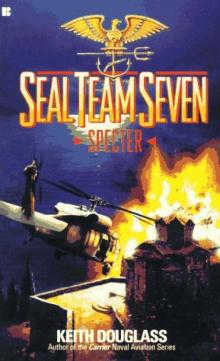 Seal Team Seven 02 - Spector
Seal Team Seven 02 - Spector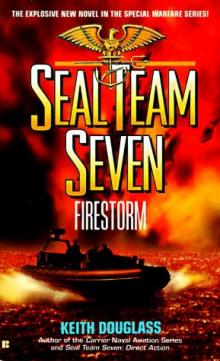 Seal Team Seven 5 - Firestorm
Seal Team Seven 5 - Firestorm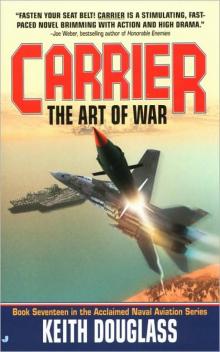 The Art of War c-17
The Art of War c-17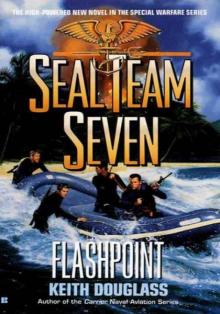 Flashpoint sts-11
Flashpoint sts-11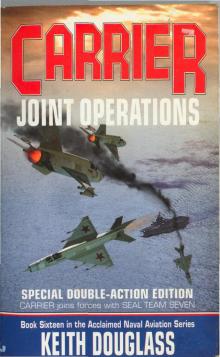 Carrier - Joint Operation Book 16
Carrier - Joint Operation Book 16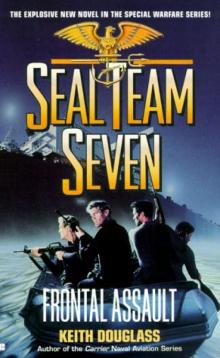 Frontal Assault sts-10
Frontal Assault sts-10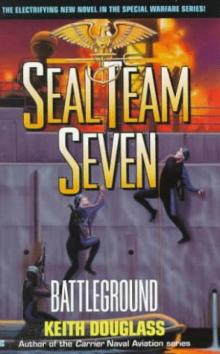 Battleground sts-6
Battleground sts-6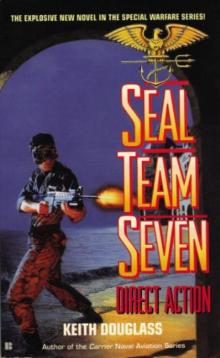 Direct Action sts-4
Direct Action sts-4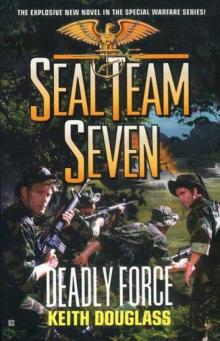 Deadly Force sts-18
Deadly Force sts-18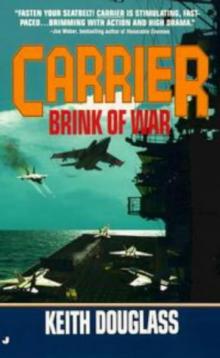 Carrier 13 - Brink of War
Carrier 13 - Brink of War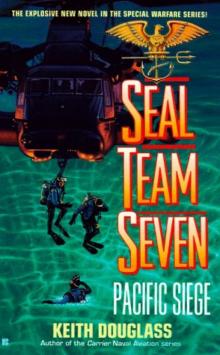 Pacific Siege sts-8
Pacific Siege sts-8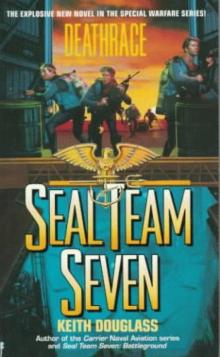 Deathrace sts-7
Deathrace sts-7